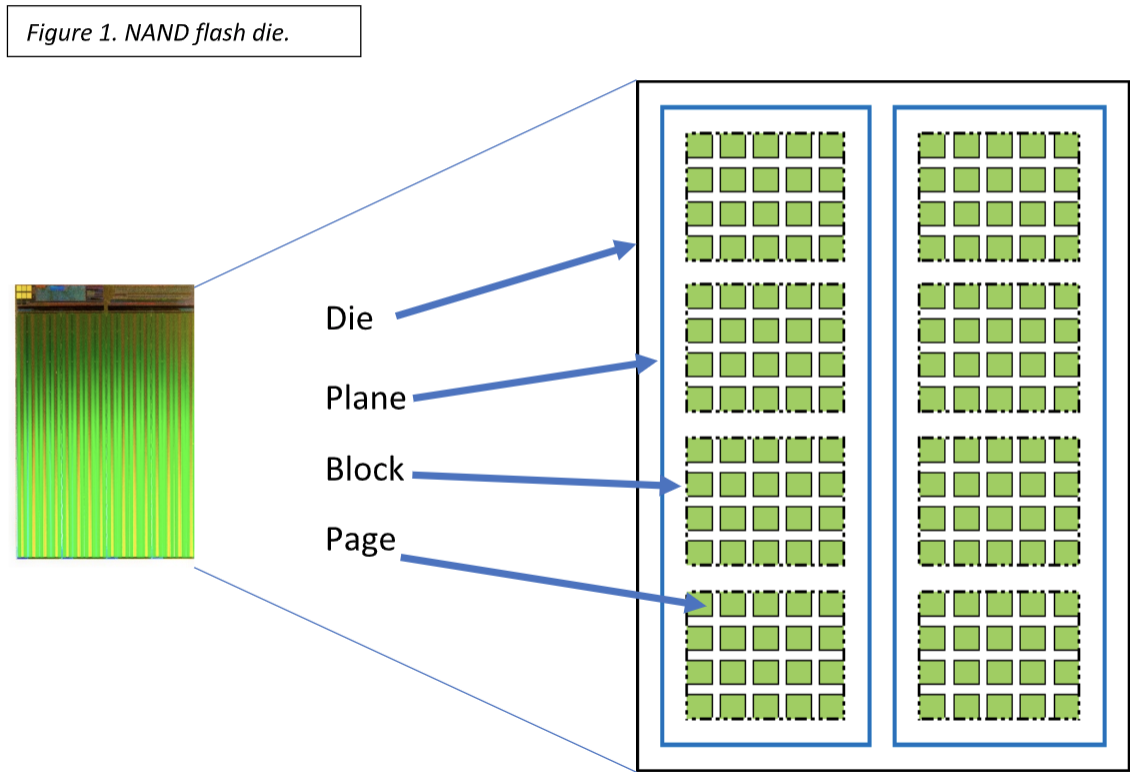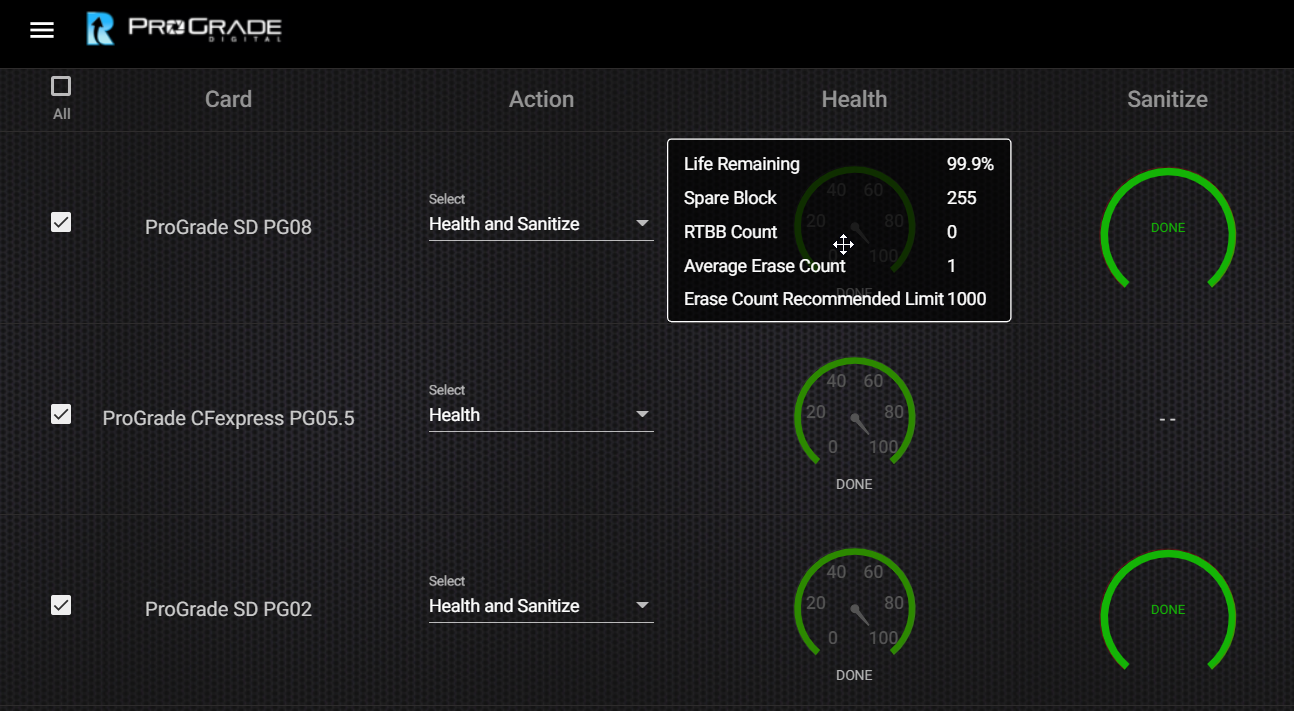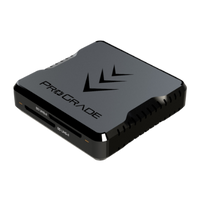Would you like to know a little secret? Something the memory card industry prefers to keep to itself, but we have never been afraid to talk about?
Memory cards slow down over time. Not only cheap, consumer-grade cards, but high-quality cards as well. It happens because they get dirty and fragmented as we use them.
We take some photos, review them, delete the ones we do not like and carry on shooting. Later, when the card gets filled, we offload the content, do a quick reformat, and resume shooting. To understand why this is a problem, we need to look at how memory cards work.
CFexpress cards, CFast cards as well as SDXC cards and microSD cards all use NAND flash memory. It’s an electrically erasable and reprogrammable non-volatile memory, meaning it can retain the stored information even after power is removed, unlike DRAM.
The NAND flash memory has many advantages over its counterparts. Among all else, they have the highest density of all non-volatile memories. You can store as many as 26,000 RAW photos on a device barely the size of a nickel. Plus, NAND flash memory cards have astronomical write speeds compared to older technologies. It’s mainly because of their clever architecture that enables the flash controller to write data simultaneously on parallel planes.
All that increased speed, reliability, and capacity have one enemy – fragmentation.
Say you take ten photos and delete one of them. The fifth one, for example. By doing so, you create a hole in the middle of the stored information and force the card to reallocate data. This process is called “garbage collection,” and it is necessary to free up that space.
Every NAND flash memory card contains multiple dies that are stacked together. Each die is made of planes, each plane is made of blocks, each block is made of pages, and each page typically compacts more than 16,000 individual bits. Flash controllers can write to empty pages but can only erase a block (a collection of pages, usually more than 2,000) at a time.1

Hence, if the photo you deleted did not take up the whole block, your memory card needs to move the remaining pages around in order to free that block and allow new data to be written on it.
That’s also why you sometimes do not seem to free up any space after deleting a photo or two. We’ve all been there. Your card is completely full, yet there’s this epic sunset you absolutely need to take home with you. So, you go through your photos, look for the ones you for sure do not need, carefully delete some of them, but your camera still states “card full.” Another time, again, deleting one or two photographs may give you a disproportionately lot of free space. It all comes down to whether there is enough space to reallocate pages so that blocks can be freed up or not.
This data reallocation and so-called “garbage collection” is problematic for two reasons.
First, it slows down the card, especially when it needs to copy-paste and move around existing information while the new data is pouring in.
Second, it shortens memory card life expectancy. Every memory card utilizing NAND flash technology can be filled – erased and rewritten – only so many times before it dies. Moving around stored data puts the card pointlessly through extra cycles. That’s why it is not recommended to defragment your computer’s SSD as well.
Moreover, formatting the card in the camera does not fix the fragmentation, as it doesn’t actually erase the card. It merely clears the File Allocation Table (FAT), enabling the existing data to be overwritten. Meaning, the card must still go through garbage collection if there’s any fragmentation. That is especially unfortunate, as in this case, completely obsolete and already deleted data gets juggled around.
In short, you may think you put the card through one cycle as you fill it up and empty it after that, but in reality, if there’s any fragmentation, parts of the card will go through multiple cycles, making it age faster.
To combat pointless data reallocation and increase the life expectancy of the memory card, ProGrade Digital uses only flash controllers with built-in intelligence that limit the garbage collection process to a minimum, allowing it to take place only when absolutely necessary.
That said, even this absolutely necessary garbage collection can add up over time and affect the card’s performance. That’s why we developed Refresh Pro. It’s an innovative software meant to go hand in hand with our memory card readers.
Refresh Pro is capable of restoring the memory card to its original – like-new – condition within seconds, maintaining its speed and increasing its lifespan. Refresh Pro is easy to use, and it is compatible with all the ProGrade Digital CFexpress Type A, CFexpress Type B, CFast, as well as SDXC cards, and microSD cards.
Refresh Pro has two critical functions, Health and Sanitize. The Health function, like the name suggests, allows you to run a thorough memory card health check. This analyzes the overall condition of your card and provides feedback about the remaining life of the NAND flash memory. The Sanitize function, then again, gives you the ability to wipe the card clean, eliminate any fragmentation and return the card to its factory state.
So far, ProGrade Digital is the only memory card manufacturer that offers software like that and also the only one whose cards and card readers are designed accordingly.
Refresh Pro not only gives you more bang for your buck by significantly increasing the lifespan of your memory card, but it also ensures that your memory card, but it also ensures that your card stays in top condition and maintains the read/write speeds for years to come. So, whenever there’s this epic sunset that needs to be captured forever, with ProGrade Digital cards, card readers, and Refresh Pro, you can put your mind at ease even when you sometimes need to delete a few photos to squeeze it in there.
1For a detailed explanation of how flash memory works, see our white paper here





